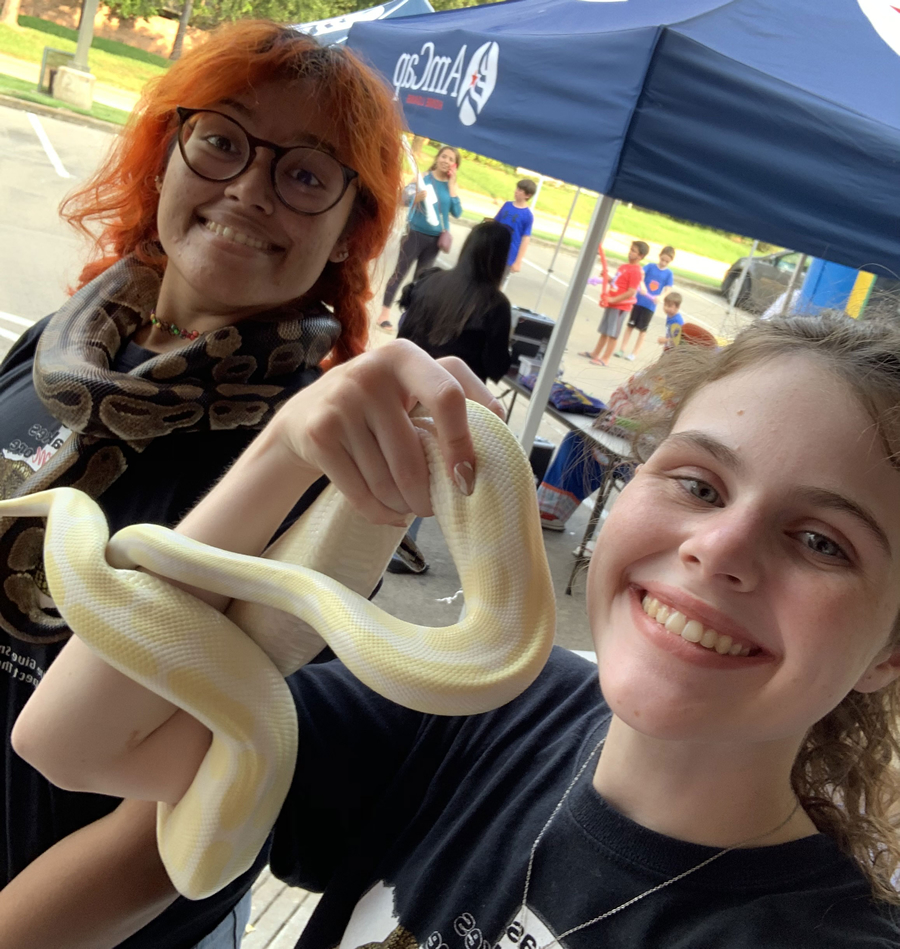All of the statements listed below are false.
This is false. Exceptions to the rule: during breeding season (usually March-June) you may see males and females together.
Coral snakes actually have front, fixed and grooved fangs which provide a primitive delivery of venom (compared to the pit viper).
A coral snake can bite anything its mouth can grip. Its mouth opens larger than it appears.
Coral snakes bite and hold on to inject their venom.
How do you think they catch water prey?
If a snake comes quickly in your direction, it is most likely because it is confused. Its goal is to get away from you.
Remember - snakes don't have legs! They cannot jump.
It's difficult to hear when you don't have ears.
You can age a rattlesnake by how many rattles it has.
Not true, rattlesnakes receive a new button (rattle) every time they shed/molt their skin.
A snake can't cross a rope.
Snakes can cross ropes. They will cross anything they can get over.
Snakes spit.
Not the ones in Texas. The clumps of foam-looking spit found on blackberry bushes and vines in Texas are often thought to be "snake spit," but the fact is, this foam is produced by Spittle Bugs.
So do a great number of the NON-venomous snakes. Most snakes have a triangular-looking head because they swallow their food whole. This is not a good way to determine between venomous and non-venomous.
Most snakes (both venomous and non-venomous) vibrate their tails when startled and when hitting leaves, brush or anything it is touching can resemble the sound of a rattlesnake.
Remember: Snakes are looking for a mate and food, not you and your family. So have fun, go outside, and keep a close eye on your surroundings. Snakes do not chase people, jump, OR roll in hoops!



Contact us to book a program for your school or events.

Visit our Calendar page for our upcoming public events.